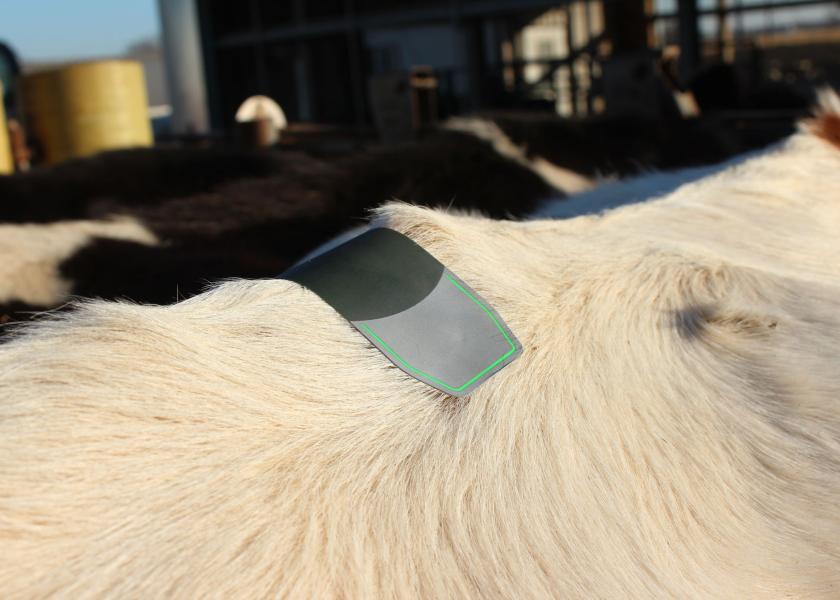Three Ways to Maximize Estrus Detection for Dairy Herds

Rapid genetic progress in the dairy industry ties to profitability, and profitability is often determined by longevity. A dairy heifer does not pay for herself until her second lactation, says Jeffrey Stevenson, professor emeritus of bovine reproductive physiology at Kansas State University.
So how do you ensure she stays in the herd through her second lactation and longer? You make sure she’ll get pregnant.
“When estrus is expressed, pregnancy rates at artificial insemination (AI) increase, more viable embryos are obtained per flush and pregnancy rates in embryo transfer recipients are greater,” Stevenson explains.
Several estrus detection tools are at a dairy producer’s disposal — activity monitors, tail paint, chalk, visual detection and breeding indicator patches. The breeding indicator patch is unique because it is economical and takes out much of the guesswork and unnecessary labor.
He offers three ways to maximize the use of breeding indicator patches.
1. Enhance synchronization protocols
National Animal Health Monitoring System’s (NAHMS) data show dairy estrus synchronization has increased in use since 2007, as has the use of fixed-time AI. More than 85% of dairy herds use AI, regardless of herd size. AI success depends largely on timing, and estrus detection tools increase that chance of success.1
A few synchronization protocols are available for heifers and cows. Stevenson says a breeding indicator patch can be useful for all types of operations. He suggests placing a patch at prostaglandin administration.
“When females have a functional corpus luteum, prostaglandin stimulates its demise and initiates the onset of estrus in 48 to 72 hours,” says Stevenson. “Although standing-to-be-mounted activity associated with estrus varies from just a few hours in lactating cows to significantly longer in dairy heifers, ovulation generally occurs between 24 and 30 hours after the onset of estrus regardless of the duration of estrus.”
A breeding indicator patch will indicate that standing activity has occurred by observing the loss of the silver or black surface ink to reveal the indicator’s color. The best part is you don’t have to be there to observe activity. A breeding indicator patch works regardless of what estrus synchronization protocol is used.
2. Determine cycling, pregnancy status
In seasonal, grazing dairy herds, cyclicity can be a big hindrance to getting cows pregnant during the breeding season. Knowing the cycling status of lactating cows before initiating an AI breeding protocol will dictate which protocol would be most successful.
It would be convenient for AI to always work the first time, but many factors affect AI success. Should it not be successful, you’d want to rebreed that female as soon as possible. Applying a breeding indicator patch to allow for detection of estrus 21-25 days after AI, says Stevenson, may show whether a female has conceived or has returned to estrus for rebreeding.
“Detecting the first estrus after AI is an important activity that’s overlooked. Once you breed a cow, it’s pretty important to determine her pregnancy status as soon as possible,” says Stevenson. “The earlier you know, the quicker you can do something about it.”
“That’s important in a dairy with a 365-day breeding season,” he adds. “But it’s even more critical in a grazing dairy where the breeding season is more defined.”
For example, when using ultrasound for pregnancy diagnosis and checking all eligible cows inseminated at least 30 to 36 days earlier, applying a patch when administering GnRH to initiate a resynch protocol will allow detection of estrus before you administer prostaglandin seven days later. If the patch is not activated during that time, then the patch also will be useful in detecting an early estrus after prostaglandin that may occur before the scheduled fixed-time AI.
3. Show estrus intensity
Monitoring estrus intensity could be used to predict superovulation response and embryo quality in heifers, Stevenson shares.
“If donor females show greater estrus intensity, you may decide to use a different sire in those heifers because you know you’re going to get more embryos out of them, if they have more than 50% of the patch surface ink completely rubbed off,” he explains. “You choose what type of sire (dairy or beef) you want to use on those females.”
In addition, estrus intensity is a good indication in the recipient herd. Maintaining the recipient herd can be the costliest part of a program, he adds. Females showing the most intense estrus are the most fertile, so you want to put the best genetics in them.
1Thomas J, Patterson D, Smith M, Brown S, Poock S, Bishop B, Abel J, Locke C, Knickmeyer E. Split-Time AI: Using Estrus Detection Aids to Optimize Timed Artificial Insemination. University of Missouri Extension. 2021.







